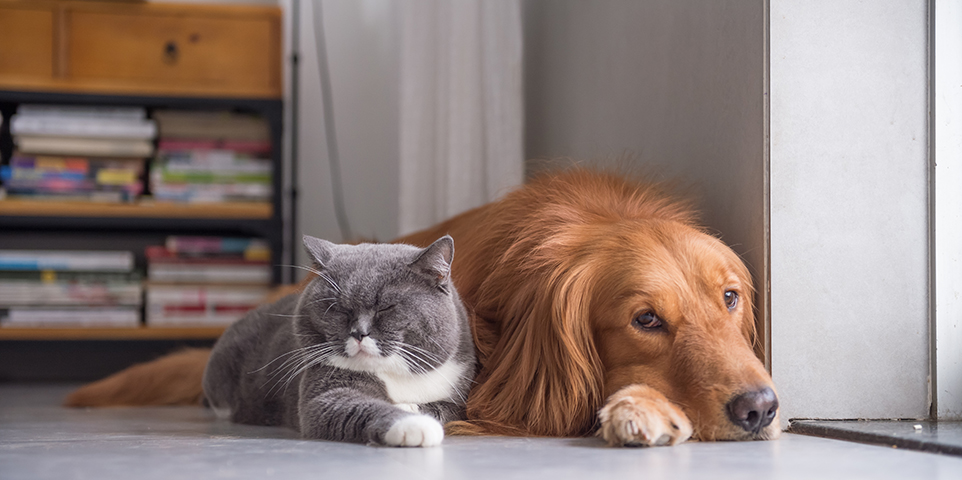Find a safe place for your pet ahead of time
After many disasters, thousands of household animals are left to fend for themselves and are lost, injured or killed. As many emergency shelters (for example, Red Cross shelters) do not allow pets, plan ahead for your household animals and:
- Contact hotels and motels outside your immediate area to check policies on accepting pets. Take these into account when crafting this part of an evacuation plan for your family.
- Make a list of boarding facilities and veterinarians outside your area that might be able to shelter pets in an emergency. Include emergency phone numbers.
- Check your community's disaster response plans to see if they include pets. Your local humane society or emergency management agency should have that information.
- Make advance arrangements if there's a possibility you won't be home when disaster strikes. Ask a willing friend or neighbor pick up your pet and meet you at a specified location. Note that these types of precautions will increase your animal's chances of survival, but they are not a substitute for evacuating with your pet.
Make a disaster kit for your pets
Just as you have important papers and key items handy and at the ready for your family's evacuation, so you should prepare a similar kit for your pets. It should contain the following:
- Medication and medical records (including proof of rabies vaccination) in a waterproof container.
- Three days' worth of food and water, at least. Include a manual can opener.
- A favorite toy or blanket or any comfort item that might help soothe your pet in a strange situation.
- A current photo and description of your pet in case you become separated.
- Your veterinarian's contact information, including name, phone number and email.
Your pet's disaster kit should also include the specific practical items needed. Depending on your type of pet, you might need:
- Leashes, harnesses and carriers for transporting.
- A muzzle, if your pet requires one or if you think he or she might react badly to strangers in unfamiliar and potentially chaotic situations.
- Cat litter and litter box.
- Snakes can be transported in a pillowcase but they must be transferred to more secure housing when they reach the evacuation site. If your snakes require frequent feedings, carry their food with you. Take a water bowl large enough for soaking as well as a heating pad.
- Birds and house lizards should be transported in a secure travel cage or carrier. In cold weather, wrap a blanket over the carrier and warm up the car before placing birds inside. During warm weather, carry a plant mister to mist the birds’ feathers periodically. Do not let the birds or lizards out of the cage or carrier.
- Pocket pets such as small mammals (hamsters, gerbils, etc.) should be transported in secure carriers suitable for maintaining the animals while sheltered. Take bedding materials, food bowls, and water bottles.
If you evacuate, take your pets
- Be prepared to leave early—don’t wait for an official evacuation! If you wait, you might be ordered to leave your pets behind.
- Keep pets on leashes or in carriers at all times. This will minimize the chances of them escaping in unfamiliar or scary circumstances.
- Keep up-to-date identification on your pet at all times. Include the phone number of a friend or relative outside your area in case your pet is lost and you cannot be reached.
Caring for your pet after the disaster
- Don’t allow your pets to roam loose after you return home. Depending on the disaster—say a storm or a fire—familiar landmarks and smells might be gone, and your pet may be disoriented. Pets can easily get lost in these situations.
- Be patient. Try to get your pets back into their normal routines as soon as possible, and be on the lookout for stress-related behavioral problems—if these persist, talk to your veterinarian.
Additional resources
For more information about pets and disaster planning:
Next steps link: If you haven't already, create an evacuation plan for the whole family.
